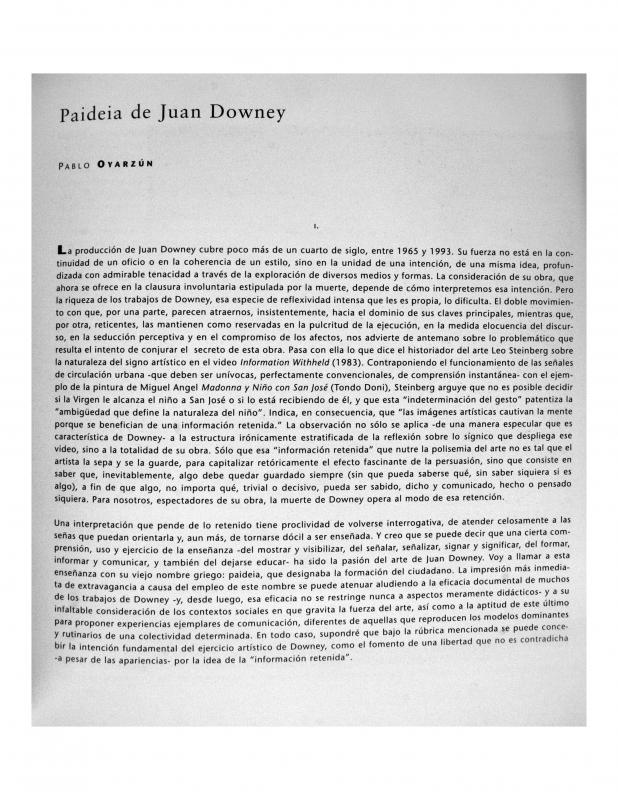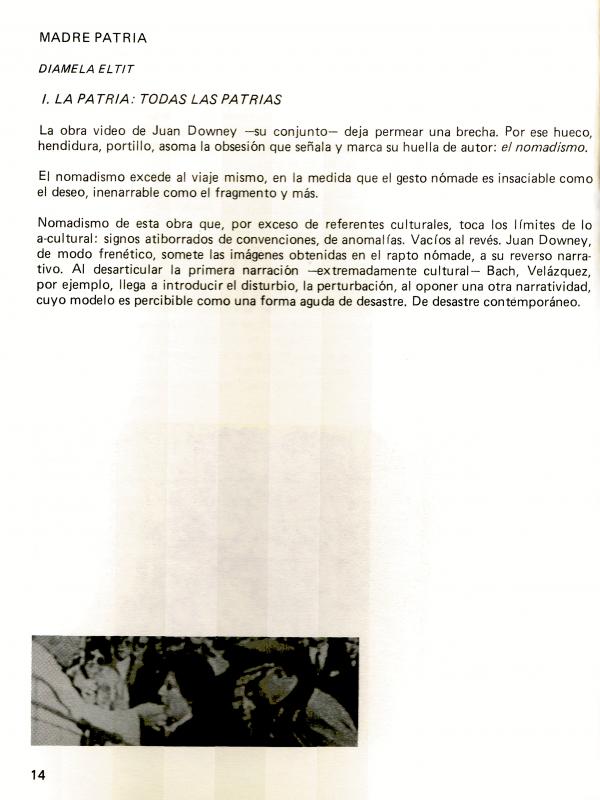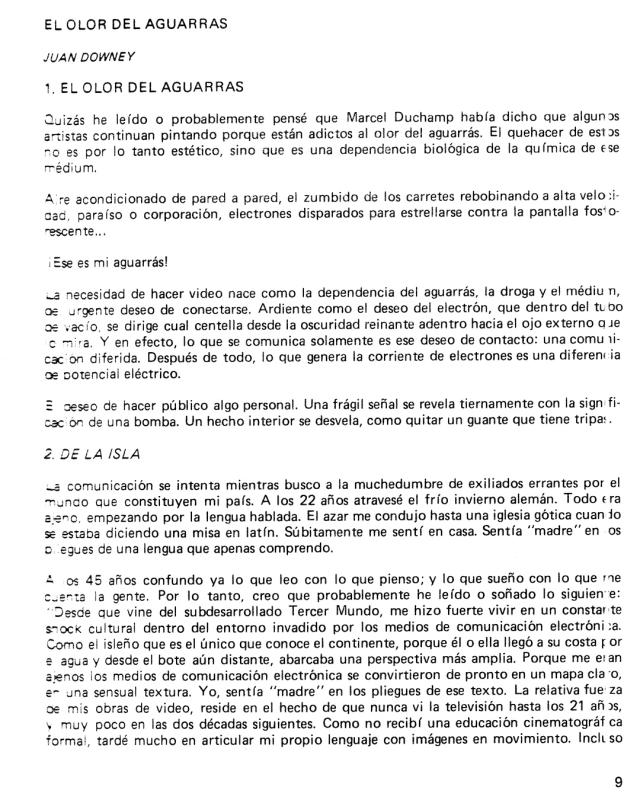In this essay Mary Sabbatino, vice president of Galerie Lelong & Co. (New York), expresses an important point of view that examines the relationship between drawing and video in the work of Juan Downey (1940–93). The Chilean artist is known primarily for his role as a pioneer in the field of video art. Sabbatino claims that Downey is just as talented at producing traditional drawing as he is at exploring and experimenting with video. She portrays him as a paradox who was able to find a balance between modernity and postmodernity, which represents the fragmentation that is typical of contemporary art and video editing. This essay was published on the occasion of the 1995 exhibition Juan Downey: Instalaciones, Dibujos y Videos. Museo Nacional de Bellas Artes, the first exhibition held in Chile after his death in New York City, where he had been living since 1969. [See the ICAA Digital Archive for other texts from this catalogue: “Viaje hacia la totalidad” (doc. no. 739212) by Carlos Aldunate; “Reelaborando la modernidad de Juan Downey en The thinking eye” (doc. no. 739203) by John Hanhardt; “Paideia de Juan Downey” (doc. no. 739185) by Pablo Oyarzún; and “Nueva York, abril 1990” (doc. no. 745642) by Downey].
As a self-taught artist, Downey’s career revolved around medial explorations that resulted in an unprecedented body of work. After graduating, at age twenty-two, with a degree in architecture he left Chile and went to Germany, studied painting in Spain, and became interested in printmaking in France. Eventually, in the mid-1960s he settled in the Unites States, but continued to travel to different countries because experiencing other cultures was an integral part of his poetics. Sabbatino notes that, as an exile, Downey carried the double burden of keeping alive the “memory” of his native country and learning how to adapt to a new culture, while knowing that it was impossible to combine the two realities. In her essay “Madre Patria” (doc. no. 735694) the writer Diamela Eltit (b. 1949) explained that Chile was clearly one of Downey’s obsessions since his videos are constant tributes to the land where he was born. This, therefore, is a new perspective that considers the artist’s relationship with that status. Downey refers to that strangeness (in his early work) in his essay “El olor del aguarrás” (doc. no 735687) in which he recalls encountering a totally foreign language but, nonetheless, felt welcomed. Video was also a foreign language that he felt he had taught himself. According to Sabbatino, drawing was a valuable skill for Downey because it helped him to develop new ideas in addition to what he accomplished in video, which was the best-known side of his work.





